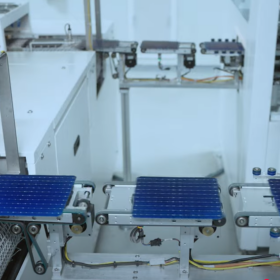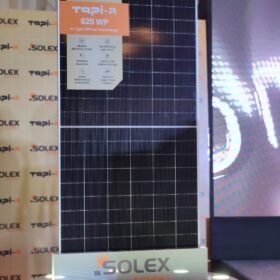The global Battery Manufacturing Equipment Market size was evaluated at USD 3.42 Billion in 2022 and is projected to hit around USD 30.84 Billion by 2030, growing at a CAGR of 31.63% from 2023 to 2030. The global demand for lithium-ion batteries is increasing for a number of reasons, including the popularity of electric vehicles and the growth of the energy storage industry. To accommodate the increased demand, battery manufacturers are devoting substantial resources to the development of eco-friendly cell technologies and the expansion of their building capacity.
As a result, the number of enterprises specialising in the production of batteries is rapidly increasing worldwide. In addition, automakers are expanding their production capacities to meet the rapidly growing demand for electric vehicles (EVs), and they are partnering with battery manufacturers to ensure a sufficient supply of lithium-ion batteries for their EVs (EVs).
Battery Manufacturing Equipment Market Recent Developments:
- Samsung has been seen to step into the market from the production of batteries to end-user utilization of the devices along with other competitors such as Panasonic.
- M&A and JVs are the various strategies adopted by companies in order to maintain a stable position in the market. Increasing research and development is seen in order to increase production as per the demand in the market.
- In September 2022, Durr Group, Manz AG, and GROB-WERKE GmbH & Co.KG have made a strategic partnership. Through this approach, they will jointly acquire and execute the projects involved in battery production facilities.
- In May 2022, Shenzhen Yinghe Technology Co., Ltd. announced the launch of a new integrated machine set that saves time and cost and provides high speed in processes such as cutting and stacking. The integrated set of machines also improves the production capacity of battery production lines.
Battery Manufacturing Equipment Market Segmentation Analysis:
The market for lithium-ion batteries has continuously expanded due to the growing predominance of electric vehicles in the automotive industry. Enterprises and industries will increasingly employ lead acid batteries in the near future. Due to the profitability of the previous model, this industry is experiencing an influx of competitors. The demand for these batteries has increased as the need for a consistent power supply to operate electronic devices has increased.
In response to the increasing popularity of electrically powered vehicles, the market for automotive batteries has reached new heights due to their extensive demand and supply chain. Due to the enormous variety of automobiles on the market, the different battery types produced by the industry have become necessary, depending on the expected power output of the product. Increasing global industrialization has benefited the industrial battery industry.
Regional Outlook:
The Asia-Pacific region has had the most development in the market for battery manufacturing equipment as a result of the high demand for electric vehicles caused by their recent introduction to the market and the rising cost of fuel. This is the situation due to the recent arrival of electric vehicles to the market.
Due to the significant demand for electronic gadgets and products associated with the country’s rapidly advancing technologies, the North American market is next in line to expand. This is due to the fact that the North American market is next in line for market expansion.
Market Drivers:
The countries having the largest established production base for lithium-ion batteries are China, Japan, and South Korea. However, other regions, such as Europe and North America, are now aiming to reducing their battery dependence on Asia Pacific. As an automotive manufacturing powerhouse, Europe invites automotive battery manufacturers to locate factories in the region. According to an article published by PV Magazine in February 2022, the region is changing into a significant hub for battery manufacture, with plans to build 35 gigafactories.
Market Restraints:
Due to the growing number of battery applications, battery production equipment will be in great demand in the next years. To meet the growing demand for batteries, it has become necessary to construct new battery production equipment facilities in numerous locations of the world. Despite this, the cost of developing a facility for battery production machinery is rather high and necessitates substantial capital expenditures. Mixing, coating, calendaring, slitting, electrolyte filling, and assembly, to name a few, are performed by a variety of machinery contained in the battery manufacturing equipment.
Market Opportunity:
The components of a battery energy storage system are battery packs and modules. The technology stores energy from renewable energy sources, such as solar panels, wind, or even the electric grid, and then releases it as needed to generate electricity or conduct other grid-related tasks. Energy storage batteries are utilised during periods of low peak demand to store extra energy for delivery to end users during peak demand periods. The energy storage battery has been utilised extensively throughout the world, especially in the United States, Canada, Germany, France, China, and India, as well as other notable economies.
Top Market Players:
Duracell, Johnson Controls, NEC Corporation,, GS Yuasa International, BYD Company, A123 Systems LLC, Hitachi Chemical Co.,, Panasonic Corporation, Samsung SDI Co.,, Toshiba Corporation, LG Chem, Contemporary Amperex Technology, Saft, Sony Corporation, Eveready Industries, and Others.





